8 Plants You Should Never Grow Next to Roses
The wrong plant neighbor can be detrimental to your beautiful blooms.
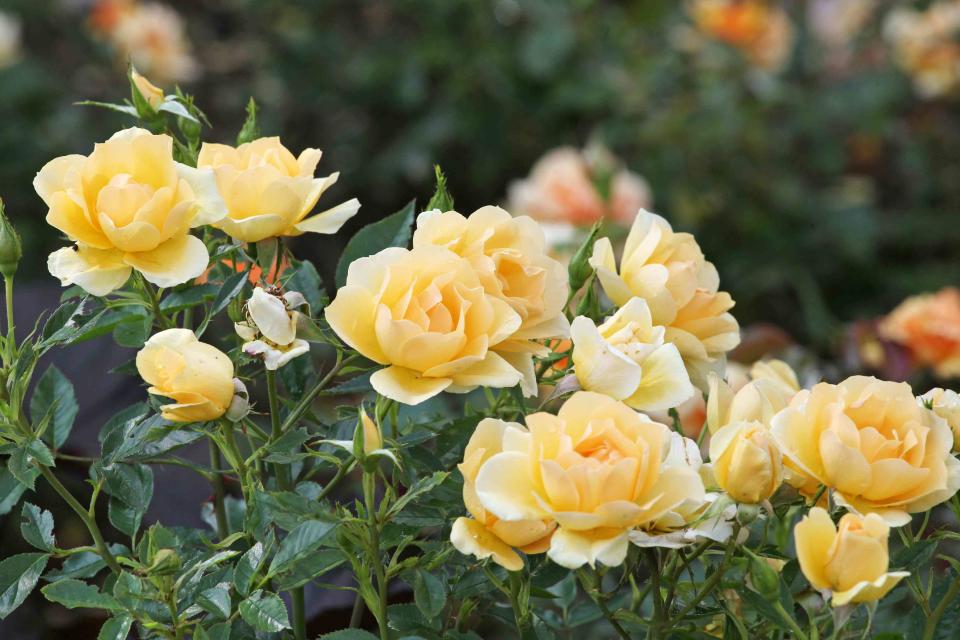
Alex Manders / Getty Images
Roses are a staple in many gardens, whether they headline the show or appear as secondary characters. But many experienced gardeners can be flummoxed when it comes to bolstering these flowering shrubs. One crucial factor to the success of your roses is whether they have the support of surrounding plants—because the wrong neighbor can be detrimental.
“Some plants, like people, just don't get along,” says Elizabeth Daniels, floral supervisor at Blackberry Mountain, a Relais & Châteaux resort in the Great Smoky Mountains. “It's beneficial to keep roses away from large trees and shrubs that can overshadow them and aggressively compete for water and nutrients.”
When choosing what to plant next to your roses, let our experts first help you decide what to avoid.
Related: How to Grow and Care for All the Roses in Your Garden
Lilacs
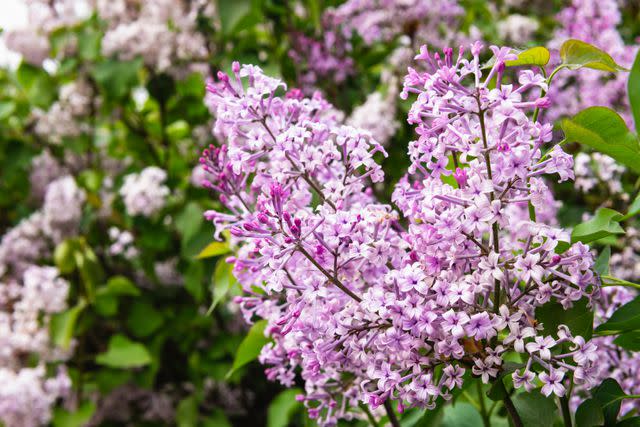
bjdlzx / Getty Images
Roses are large plants with large root systems—and they should never be planted near other large woody plants, such as lilacs, which could outcompete the rose for water or nutrients, says Ali McEnhill, owner and propagator at The Old Dairy Nursery and Gardens. “Additionally, many lilacs are terribly susceptible to powdery mildew.”
In fact, avoid planting any large shrubs with extensive root systems nearby so as not to deplete the soil of resources. “Roses simply will not flourish if they have to compete for water and nutrients,” says Eleanor Gould, director of estate gardening at The Inn at Little Washington.
Snapdragons
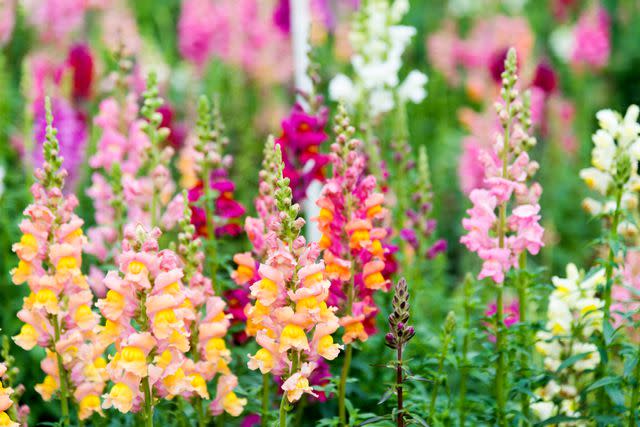
Boana / Getty Images
Snapdragons are annuals (and sometimes perennials) that come in every color of the rainbow. However, according to McEnhill, they are best grown in another part of your garden. “Sadly, snapdragons are extremely susceptible to both powdery mildew and rust and should never be planted near roses,” she advises.
Potatoes, Tomatoes and Peppers
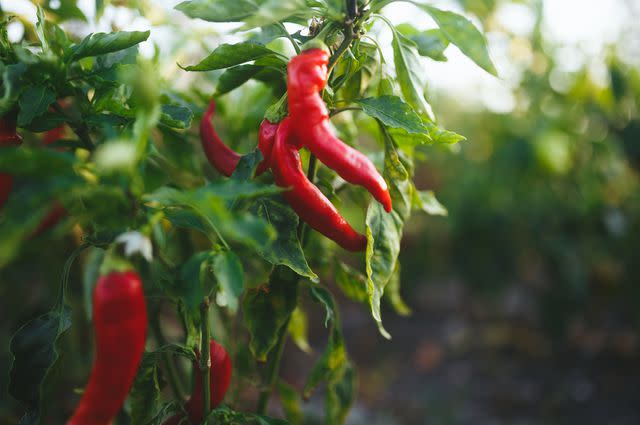
Fruits and vegetables, such as potatoes, tomatoes, and peppers, shouldn’t be grown next to roses due to how prone they are to diseases that can spread, such as verticillium wilt and fungal infections. According to Kristen Smith, rose evaluation manager for Star Roses and Plants, “Many fruits and vegetables are susceptible to the same pests—such as aphids and spider mites—making the pairing a powerhouse for pests to attack.”
Perhaps consider something like larkspur instead. “Larkspur is a friend, as they attract beetles and poison them with their leaves,” says Daniels. “Larkspur is also beautiful and wonderful in any rose arrangement.”
Related: 11 Fast-Growing Climbing Roses for a Lush, Cottage-Garden Look
Hollyhocks
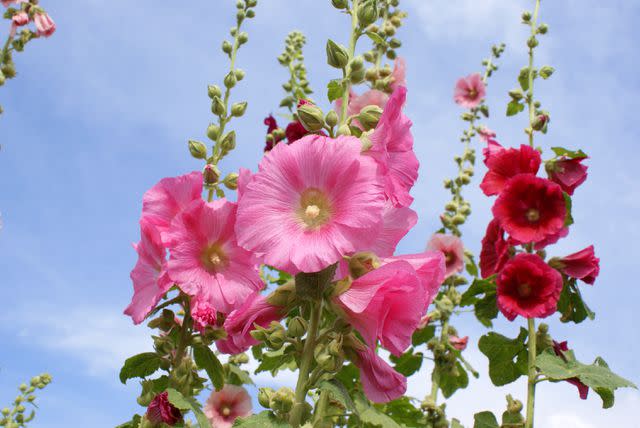
Getty Images
Roses and hollyhocks are both cottage garden classics that enjoy the same conditions, such as full sun, fertile soil, and excellent air circulation, says McEnhill. “Unfortunately, they are also both susceptible to rust,” she says. “The best way to avoid rust is to provide both plants with plenty of space and to never plant them near one another.”
Leopard's Bane
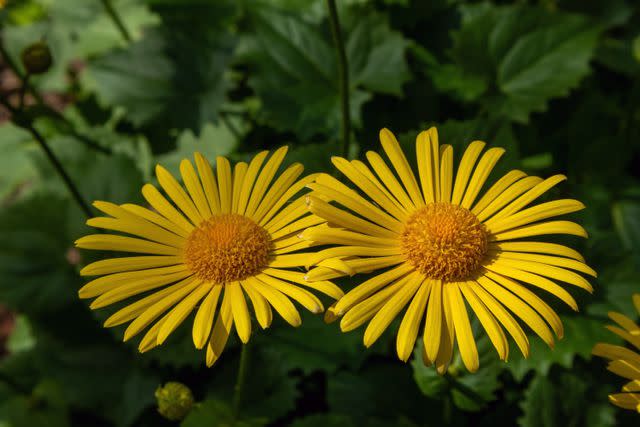
Esa Hiltula / Getty Images
Leopard's bane is a perennial ground cover that produces cheerful, yellow flowers. “But it shades the ground, locks in moisture, and can quickly colonize an area,” says McEnhill. “Unfortunately, this creates the perfect breeding ground for black spot, one of the fungal diseases that roses are most susceptible to.”
Mint
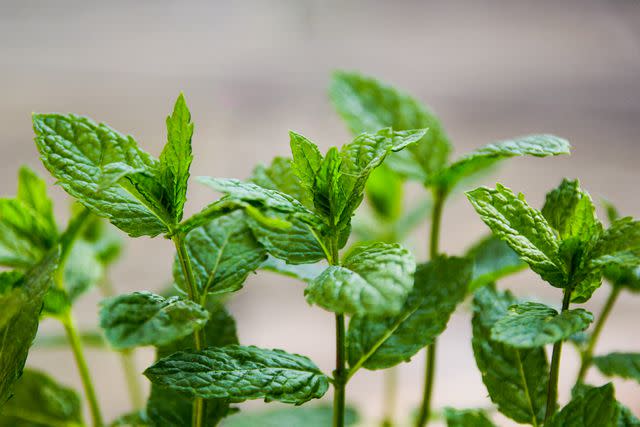
Kinga Krzeminska / Getty Images
Mint is a favorite among gardeners due to its resilience and ability to deter pests. However, the rapid spreading habit of mint can overwhelm neighboring roses if not pruned back, causing the roses to compete for nutrients and water, says Smith. “Also, the strong scent of mint can deter pollinators from visiting the roses.”
Morning Glory
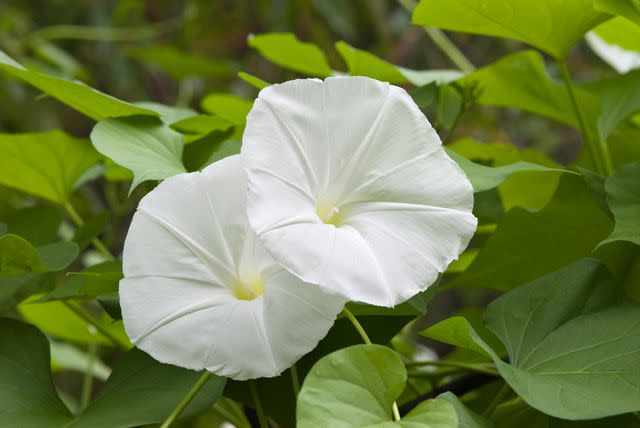
As climbers, morning glories have been known to brighten up retainer walls and the ugliest of fences. But its sturdiness can harm rose stems and foliage should they become intertwined. “The climbing habit of the morning glories can also cause shading and competition for water and nutrients,” Smith says. “It’s best to avoid any plant that might overtake your roses.”
Related: How to Deadhead Roses So They Bloom All Season Long
Creeping Jenny
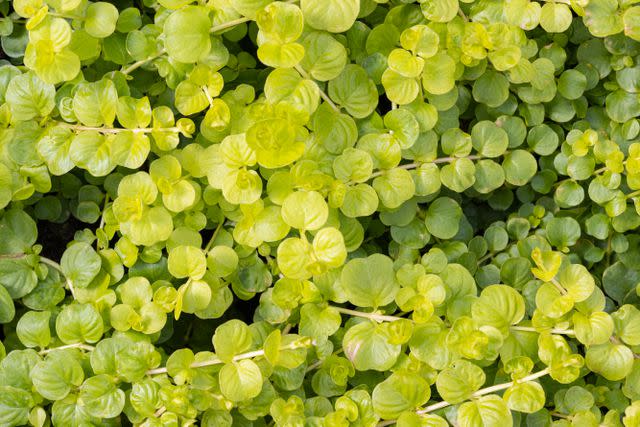
Andres Victorero / Getty Images
Like leopard's bane, creeping Jenny can make the ideal ground cover—but you’ll want to avoid it near your roses. It spreads rapidly and forms dense mats, which can potentially smother your roses and compete for resources. “The overcrowding, reduced airflow, and increased moisture retention from the creeping Jenny may increase the risk of disease for the roses,” says Smith.
3 Edible Plants to Grow Nearby
The best companion plants for roses benefit and protect the foliage, flowers, and soil. “Certain pest-repellent plants protect the roses from aphids, thrips, spider mites, beetles, borers, and other insects,” says Smith. “Other plants attract beneficial insects such as bees, ladybugs, and wasps.”
When companion planting with roses, make sure to plant neighbors far enough away so that they do not compete with the roots of the roses. If you want to grow something edible alongside your roses, Daniels suggests pairing them with:
Allium
Garlic
Chives
These beneficial plants will deter bugs and are thought to enhance the fragrant smell of the rose. Then, “enjoy them together both outside in your garden and brought inside on your tables,” she says.
Read the original article on Martha Stewart.
